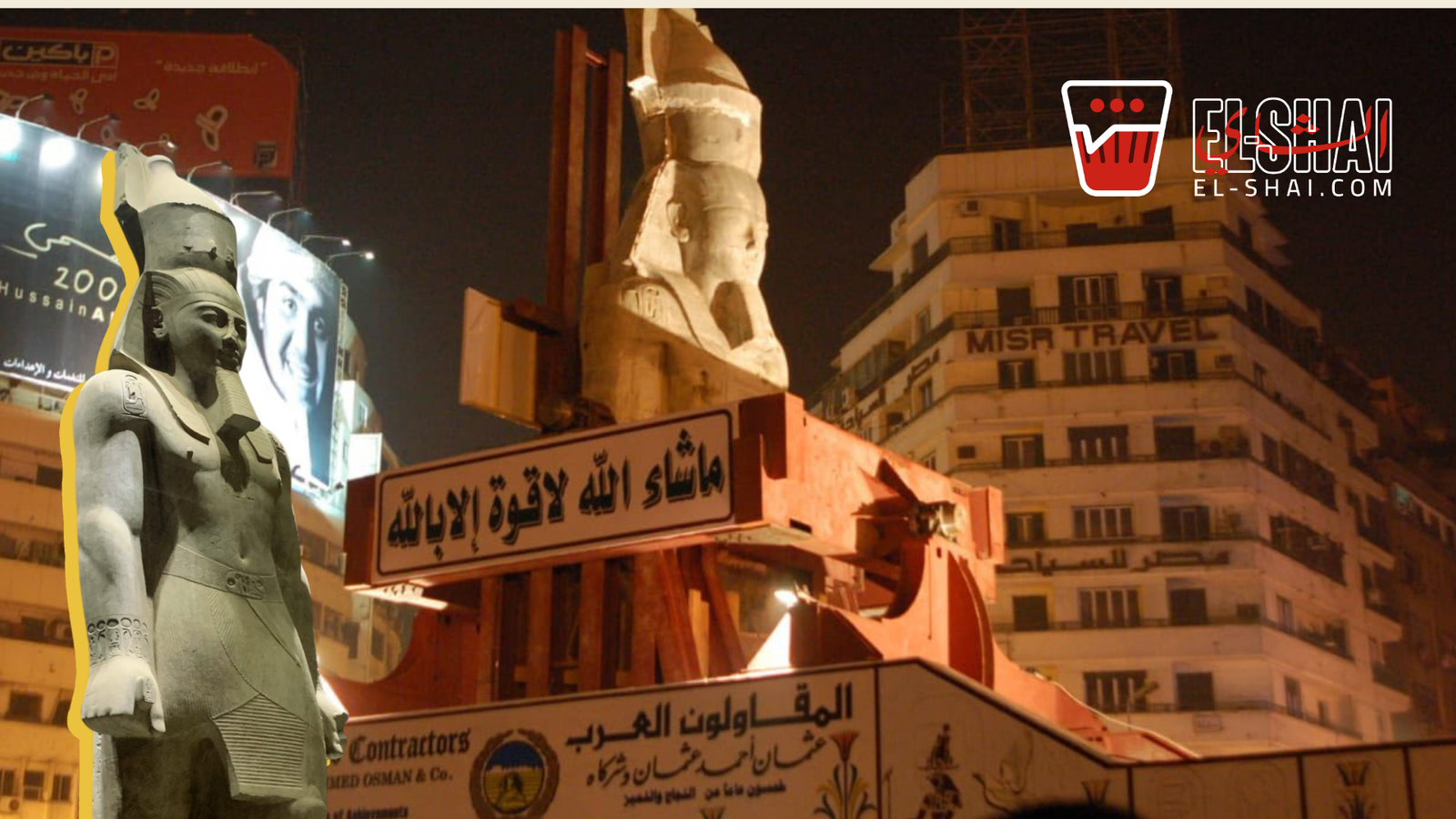In 2006, Egypt pulled off one of the most extraordinary engineering and archaeological operations in modern history—moving the colossal statue of Ramses II from Ramses Square to its new home: the Grand Egyptian Museum.
From Memphis to Cairo: The First Move (1955)
The 11-meter, 100-ton limestone statue began its journey in 1955 when it was moved from the ancient city of Mit Rahina in Giza to Cairo’s Ramses Square.
Crowds filled the streets to witness the “Son of the Sun God” make his grand entrance into the capital.
The Historic 2006 Move
Half a century later, Ramses II made headlines again. On August 25, 2006, Egypt’s Arab Contractors carried out the colossal move—transporting the 83-ton statue 30 kilometers from downtown Cairo to the new Grand Egyptian Museum site.
The journey, which took hours through the night, was followed live by millions across Egypt and the world.
The Man Behind the Wheel
At the heart of the move was the driver, Ahmed ElGharabawy, whose steady hands and calm precision, while literally driving 1-handed like a pro, carried Egypt’s history through Cairo’s streets that night.

For hours, he navigated narrow roads, sharp turns, and watched crowds with one goal: to deliver the Pharaoh safely.
Even people on Facebook loved him, and we do too!
How Egypt Did It—When Others Said It Couldn’t Be Done
Foreign experts proposed cutting the statue or lifting it by helicopter. But Egyptian engineer Ahmed Hussein refused both, designing a custom hydraulic trailer that absorbed vibrations and kept the statue stable throughout the long trip. Zahi Hawass later recalled how, at 1 a.m., women in Ramses Sq. leaned from their balconies shouting, “We’ll miss you, ya habibi!” as the king passed by one last time.
Restoration and New Life at the GEM
Once it arrived, Ramses II underwent months of restoration inside the Grand Egyptian Museum.
Years later, he made one final short move, just 400 meters, to stand in the Great Hall, ready to greet visitors as the first monument they see upon entering.
Ramses II: Forever the King
Three journeys. Six decades. One legend.
The story of Ramses II’s moves isn’t just about engineering—it’s about Egypt’s devotion to preserving its identity, its pride, and its kings.






